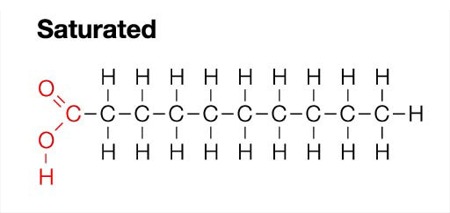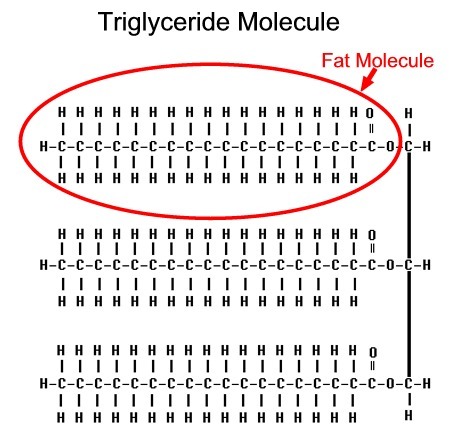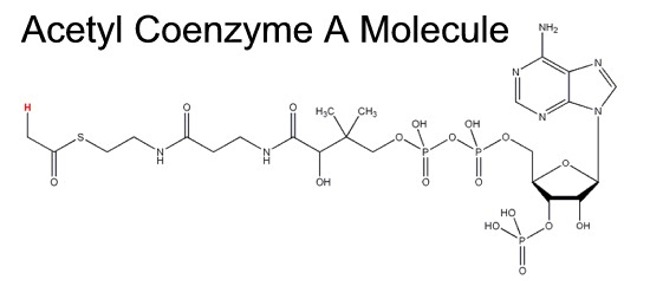Conventional Med
Cholesterol Doesn’t Cause Heart Disease – And It Isn’t a Fat
This is a replay of an oldie but goodie. If you think that cholesterol is a kind of fat, then you need to read this!
The people with the highest cholesterol live the longest. It’s a point that’s generally ignored in modern medicine, but it is a fact.
A huge industry in statins constantly promulgates the opposite notion, and has done such a good job that doctors routinely check people’s cholesterol levels .
They don’t question the ever-lowering so-called healthy cholesterol levels. Nor do they notice that variations are continually tacked on to the theory in an attempt to keep it alive:
It isn’t total cholesterol that matters, it’s HDL that counts. Well, no, actually it’s the ratio of HDL to LDL cholesterol. Hmmm…the latest research shows that it’s oxidized LDL that does the harm.
It’s all bunk.
The implied logic of low cholesterol equaling good health seems so, well, logical. We all “know” that cholesterol gums up your blood vessels, creating plaque that builds up until some breaks off, traveling to the heart and blocking a blood vessel there, where it causes part of the heart muscle to die. Or, it builds up so much that arteries are choked off. However, when examined closely and in line with what we actually know of cholesterol metabolism, it doesn’t add up.
The Cholesterol Con
Cholesterol is a critical chemical. It’s a basic building block for virtually every body function. Without it or without adequate amounts, we suffer and die. It’s required to create Vitamin D. It’s required for nerve function, including all mental functions. Cell membranes would disintegrate without it. Sex hormones require it. Digestion requires it. Even the heart requires it.
Since it’s so necessary, it’s clear lowering cholesterol levels too far must be harmful. It’s so important that our bodies have a cholesterol-regulating function. When levels are too low, it’s manufactured in the liver.
The first thing we need to clarify is that cholesterol is not fat, nor is it made from fat. Fat and cholesterol bear virtually no resemblance to each other. The following discussion of the molecules should clarify some of the confusion spinning around fat and cholesterol.
Fat/Lipid Molecule
A fat molecule consists of a string of carbon atoms strung together, with each carbon atom having one or two hydrogen atoms attached. On one end of the fat molecule is an extra hydrogen atom, and at the other is a group of one carbon, two oxygen, and one hydrogen.
Triglycerides
We often hear the term triglyceride referenced in the anti-cholesterol propaganda, conflating the two. That, though, is not accurate. Glycerol is half of a sugar molecule. To transport a fat molecule around the body, it is connected to a glycerol molecule. These fat-glycerol molecules always connect up in threes, and are called triglycerides. This is the form in which fats are transported to cells throughout the body.
Cholesterol
A cholesterol molecule is considerably more complex than a triglyceride. The basic molecule of cholesterol is Acetyl Coenzyme A, usually referred to simply as Acetyl CoA. Acetyl CoA contains all the elements of a fat or triglyceride molecule: carbon, oxygen, and hydrogen—but they’re not arranged in the same way—plus it has a phosphorus atom, a sulphur atom, several nitrogen atoms, and ring structures, none of which are contained in a fat or tryglyceride molecule.
Obviously, there is no fat molecule hiding inside an Acetyl CoA molecule. Acetyl CoA is the first molecule that the liver transforms into something else in the process of synthesizing cholesterol. It’s a complex process, involving multiple steps. No fat is created in this process and no fat is used in it.
So what’s the connection between fat and cholesterol? Quite simply, there isn’t one. That’s the cholesterol myth. Eating fat doesn’t raise cholesterol levels. They’re two entirely different things.
Cholesterol, like fat, cannot be dissolved in water. So, it must be carried around the body as part of something else. That something else is various types of lipoproteins, which are complex molecules consisting of fats (lipids, the ‘lipo’ of lipoprotein) and proteins. There are several types of lipoproteins, and their names are often misleading. In order of size, from biggest to smallest, they are:
- Chylomicron: It carries a triglyceride molecule from the intestinal tract to fat cells throughout the body, where the triglyceride is transferred. The remainder of the chylomicron is probably disposed of by the liver. It has nothing to do with the other lipoproteins, and is several times larger than them. It does not appear to have anything to do with cholesterol.
- VLDL—very low density lipoprotein: VLDLs carry triglycerides and cholesterol. When it gives up a triglyceride to a fat cell, it shrinks, turning into the next type of lipoprotein, IDL.
- IDL—intermediate density lipoprotein: IDLs also carry triglycerides and cholesterol, and when one gives up a triglyceride, it becomes an LDL.
- LDL—low density lipoprotein: LDL is what’s referred to as “bad cholesterol”. Since it isn’t cholesterol, that’s a bit odd. Its function is to carry cholesterol to where it’s needed. When its cholesterol is gone, it does not become another type of lipoprotein.
- HDL—high density lipoprotein: HDL is called “good cholesterol”. We’re told that HDL effectively sucks cholesterol out of arterial plaques and returns it to the liver, where they’re destroyed. The problem with this idea is that no one has ever documented that it happens. HDL is believed to be manufactured in the liver, though no one actually knows if that’s true.
The terms very low density, intermediate density, low density, and high density refer to the relative amount of protein as each lipoprotein becomes the next in line. By losing a triglyceride or cholesterol molecule, the size of the lipoprotein shrinks, but the number of protein molecules remains the same. Thus, the relative density of protein in a VLDL is “very low”. When it releases a triglyceride and becomes an IDL, it’s labeled as “intermediate density” because the concentration of protein is greater than it was as a VLDL molecule. The same holds true with each conversion.
Chylomicrons, VLDLs, and HDLs are all manufactured by the liver. VLDL, IDL, and LDL are related. As Dr. Malcolm Kendrick states in The Great Cholesterol Con:
The liver makes VLDLs and sends them out into the blood stream. A VLDL finds the right spot and releases one triglyceride molecule. The VLDL becomes an IDL, which continues on its way until it finds a place to deliver another triglyceride. The IDL then becomes an LDL. What’s left in an LDL molecule, other than the lipoprotein itself, is cholesterol.
VLDL => IDL => LDL => HDL
All types of lipoproteins are referred to as cholesterol, though none of them actually are. They carry cholesterol, but they aren’t the thing itself:
A Quick Recap
- Cholesterol is necessary for good health.
- Cholesterol isn’t fat.
- Cholesterol isn’t made from fat and doesn’t contain any fat molecules.
- Cholesterol and fat are carried in the blood by lipoproteins.
Cholesterol and fat have completely different functions. Fat provides energy. Cholesterol is a primary molecule utilized in a huge array of metabolic functions throughout the body. Cholesterol isn’t fat and doesn’t become fat. It isn’t stored as fat.
Fat and cholesterol are two different things that happen to share the same transport vehicle. That’s all. There is a connection between cholesterol levels and heart disease, but it is not a causal connection. Therefore, a focus on lowering cholesterol does not address the real problem.
Source:
- The Great Cholesterol Con, by Dr. Malcolm Kendrick, John Blake Publishing Ltd. 2008
Tagged acetyl coenzyme a, big pharma, cholesterol, cholesterol con, cholesterol fat, cholesterol heart disease, cholesterol not fat, cholesterol transport, conventional medicine, great cholesterol con, hdl cholesterol, health cholesterol, idl cholesterol, ldl cholesterol, modern medicine, pharmaceutical drugs, pseudo-science, pseudoscience, triglyceride, vitamin d, vldl cholesterol




















Pingback: Heart Attack Vaccine: Creation of a New Autoimmune Disorder | Gaia Health
Pingback: Natural Path Remedies » Blog Archive » April Health Newsletter
Pingback: Heart Attack Vaccine: Creation of a New Autoimmune Disorder | Next Level Nutrition
Pingback: Kolesterol er ikke fett | Kostholdsklinikken
Pingback: Nutrition Labels Are a Bad Joke, Designed to Mislead, Not to Inform | Gaia Health